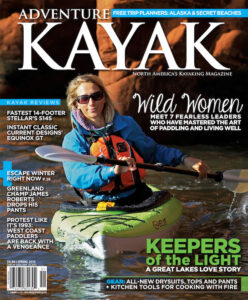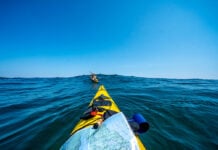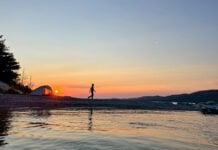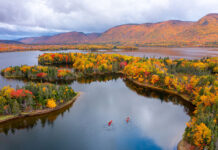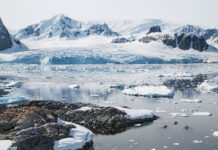It’s not easy being a paddler in the city. Expensive real estate, limited boat storage, premium parking, traffic congestion and polluted waters conspire to make metropolitan kayakers feel like they’re paddling against the current. Here are eight secrets to city survival, gained from years of experience paddling and battling through the worst urban woes.
8 ways to unlock your urban paddling potential
1 Get a waterfront pad
Easier said, right? But waterfront city living gives you the best of both worlds—urban convenience out the back door, watery wildness out the front. Walk your kayak down to the dock for a sunrise paddle, or size up surf conditions from the kitchen window.
To accomplish this it helps to lower your standards. I managed waterfront living as a student by renting rooms in dilapidated houses, subletting, housesitting and moving indiscriminately between basements, garrets and laundry closets. My bed was a Therm-a-Rest air mattress on shipping pallets, but I lived in some of the Pacific Rim’s priciest oceanfront ‘hoods for less than $400 a month.
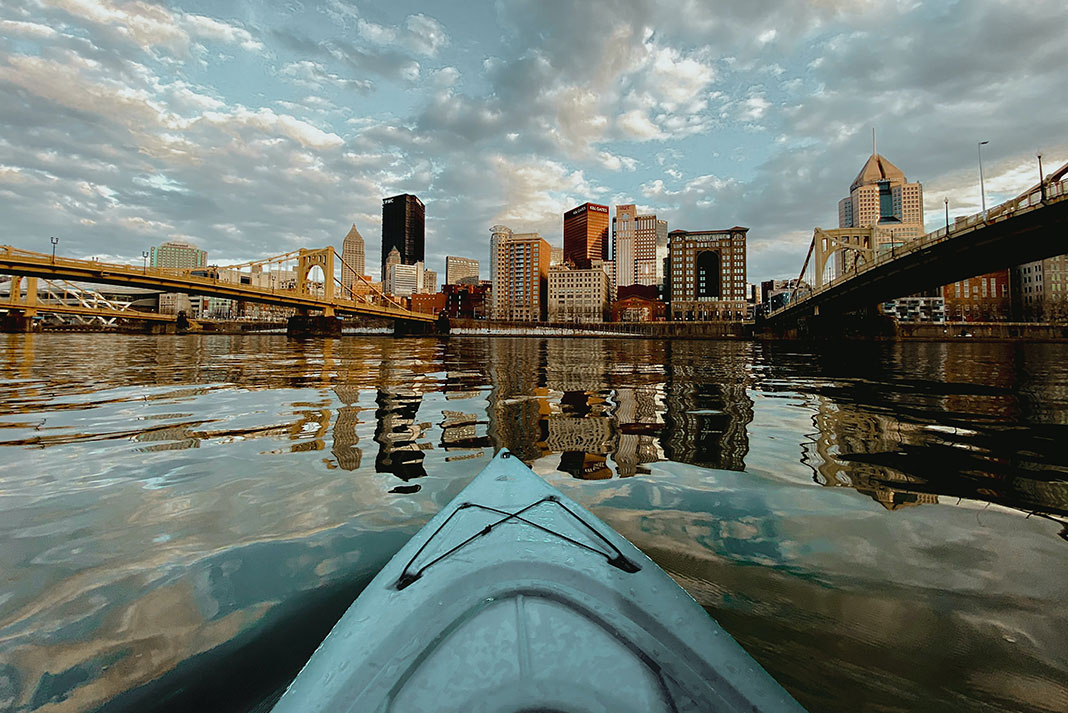
2 Get your boat a waterfront pad
The next best thing to living on the water is to park your boat there. The 50-odd cubic feet required to store a kayak is a slice of waterfront that almost anyone can afford.
Just be prepared to get in line. My local paddling club has been full for years. Every spring I get an email from someone who’s de-cluttering the waitlist, asking what skills I might have to volunteer if I were chosen to join, which hints at a suspiciously biased selection process. I promised to wash and wax everyone’s kayaks, and attached a swimsuit photo, but I haven’t heard back.
3 Ditch your car
Like all booming cities, my town is in a state of perpetual gridlock, construction and repair. The road to my local put-in has been closed for more than a year. Driving to the water means running a gauntlet of street closures, flag-persons, single-lane bridges and traffic jams that crop up around various special events and seasonal attractions. I pass a Cirque du Soleil show, a bustling Chinese grocer and a waterfront pool bar, capacity 3,000, where Justin Bieber likes to go when he’s in town.
At the beach, I have to fight the other three million city residents for parking. One time, the only available space was along a strip of vacant and overgrown waterfront. Forced to portage through a network of shrubby singletrack, I encountered an unusual number of deeply tanned and extraordinarily friendly middle-aged men before reaching the water.
Had I sorted out waterfront storage as per section two, I could have biked to the water in 10 minutes. Until I get into that paddling club, I’m shopping for a kayak trailer for my bicycle.
4 Join the sharing economy
People are sharing everything these days: cars, tools, houses. Like these items, good kayaks are expensive, but durable and long lasting. Why own three boats that only get used for hours a week? I’ll bet one kayak could serve five or 10 people. We could store it by the water, share the lock combo, and set up online reservations. I’m thinking of starting a community library for outdoor gear of all kinds, so I don’t have to own a nest egg’s worth of kayaks, canoes, surf skis and paddleboards for every conceivable mode of watery play. Want to join?
5 Cover your cockpit
Pricey real estate and high populations make homelessness a problem in our cities, notably among wildlife. Spiders and slugs are my customary cockpit stowaways. But twice, raccoons have turned one of my kayaks into a fetid winter den or part-time port-a-potty. And readers may remember an earlier reference in this column to a kayak bulkhead that was devoured—in the spring I found a gaping hatch full of pungent foam crumbs. These poor vermin are, like us paddlers, just wild creatures trying to eke out a living in a hostile urban jungle, but that does not make us allies. Shell out for a good cockpit cover.
6 Check the water quality
In the city, weather conditions are generally tamer, but along with the forecast I also check online water quality reports. After heavy rains, the E. coli count skyrockets. It’s okay to paddle, but wait a couple days before attempting rolls or rescues.
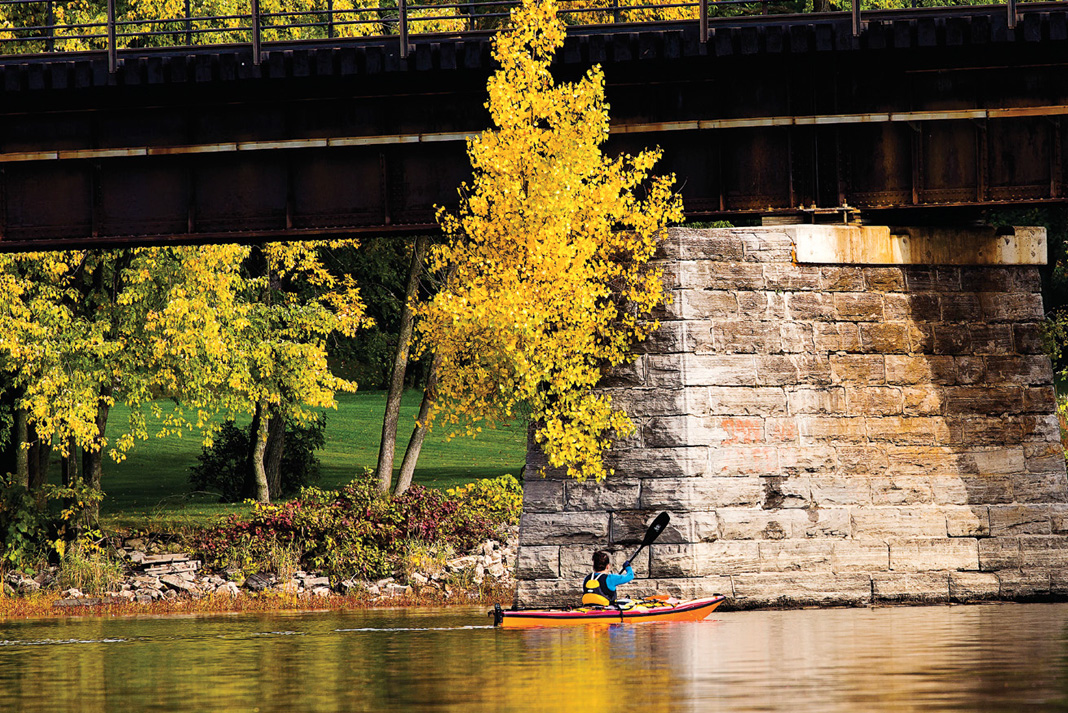
7 Embrace the offseason
Come fall, the circus leaves town, the beachgoers are replaced by migrating birds, parking lots empty, the bacterial counts drop and the algae blooms die off. Frigid temps wrap the busiest beaches in a cloak of peace, wildness and free parking. To love off-season paddling, all you need is a drysuit.
8 Adopt a watery state of mind
The key to overcoming the travails of urban paddling is to let your time on the water be a gateway to a new pattern of thought. For me, being surrounded by millions of other humans threatens to turn every petty annoyance into a personal battle: the guy who cut me off at the stoplight, the gentrifying hordes driving up house prices, the construction workers blocking the roads. It’s all somebody’s fault. Nature inverts this mentality; out there, it’s not about you or anybody else. All you can control is your attitude. And that’s calming.
One of my favorite places to paddle is a large peninsula that’s younger than I am—it’s constructed entirely of construction waste. As new glass condos overtake the ephemeral downtown, truckloads of rubble are dumped here for infinite repose, raising the lakebed to become parkland, a refuge for coyotes and waterfowl.
The bulldozed remains of so many expressways and buildings have a timeless, wild quality that belies their manmade origins. It used to make me angry that all I had to look at were the crumbled corpses of factories and warehouses. That the weathered driftwood and fragrant kelp beds of my student days in the Pacific Northwest had been cruelly replaced by broken concrete telephone poles and mangled knots of rebar twisting out of the shallows like jagged reefs.
But paddling is paddling. It tires your muscles and opens your mind in the same way, no matter how urban. Whatever the headaches of getting on the water and home again, you’re a better person for it.
